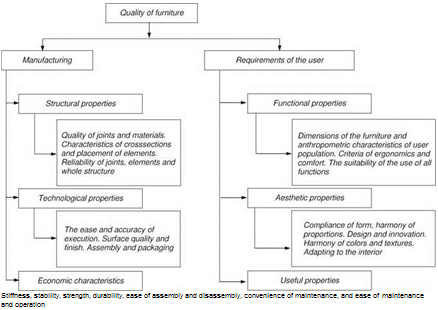The concept of quality first appeared in the philosophy of Plato, who called it poiotes. Cicero, when creating Latin philosophical vocabulary, for the Greek term, created the Latin qualitas. Hence, qualitas infiltrated some of the Romance and Germanic languages, e. g. as qualita in Italian, qualite in French, quality in English and qualitat in German. According to Aristotle, any quality boils down ultimately to two types. Quality in the first meaning is that what constitutes the diversification of the object in itself. The second type of quality constitutes the properties of variable things, i. e. properties in terms of which changes are distinguished (warm and cold, white and black, heavy and light). He also attributes to quality every advantage and defect (Iwaskiewicz 1999, Lancucki 2003).
In ancient Egypt, proof of the commitment of builders to quality was the construction of the pyramids, which to this day are testimony to the great craftsmanship of builders. In the Code of Hammurabi (from 1754 BC), it is concluded, among others, that if a mason built a house for a citizen and did not check his work and the wall leaned, this mason will strengthen this wall for his own silver.
The dictionary of the English language defines quality as a property, type, kind, value and set of features constituting that a given object is that object and no other, whereas in the colloquial language, quality usually means an evaluation of the degree in which a given object or service conforms to the requirements of the evaluator. Such an assessment may include all or some of the features of the evaluated object: weight, colour, shape, structure, chemical composition, physical characteristics, impact on the environment, efficiency in the performance of specific functions, etc.
In the literature on the subject (Iwaskiewicz 1999; Lancucki 2003), definitions of quality are presented in which, despite the large variety of wordings, there is one fundamental idea that quality means fulfilling the customer’s requirements.
The evaluation of the quality of furniture comes down to a detailed analysis of the features of design, construction, functional, ergonomic, safety for the environment and directly for the usage.
Each piece of furniture, as an object of applied arts, in a long life cycle usually passes over two stages: the stage of development, i. e. design and manufacture, and the stage of use, i. e. fulfilling needs. In the first stage, the designer and the manufacturer can only in theory or on a small sample evaluate the quality of the modelled and manufactured products. The real assessment of the quality of the furniture piece takes place only during everyday use by dozens or hundreds of users. Therefore, furniture should be evaluated from two points of view (Fig. 2.16):
• manufacturing and
• requirements of the user.
Among the manufacturing characteristics, construction, technological and economical values are distinguished, which affect both the aesthetics and the safety of using furniture and the technical cost (as low as possible) of manufacturing.
|
The price level of sales. |
|
|
——– ► |
Magnitude of the actual cost of |
|
manufactured. Product |
|
|
profitability |
|
Fig. 2.16 The division of furniture in terms of quality |
 |
Among the features associated with the requirements of the user, the following should be named functional, aesthetic and user-friendly.



